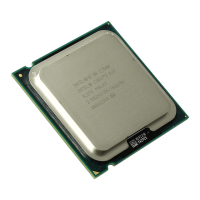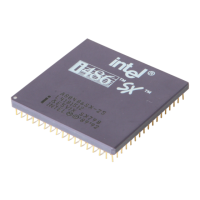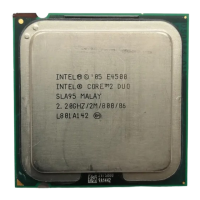
Do you have a question about the Intel E2160 - Cpu Pentium Dual-Core 1.80Ghz Fsb800Mhz 1M Lga775 Tray and is the answer not in the manual?
| Processor Model | Intel Pentium Dual-Core E2160 |
|---|---|
| Clock Speed | 1.80 GHz |
| FSB Speed | 800 MHz |
| L2 Cache | 1 MB |
| Socket | LGA 775 |
| Core Count | 2 |
| Thermal Design Power (TDP) | 65 W |
| Core | Conroe |
| Manufacturing Process | 65 nm |
| Virtualization Technology | No |
| Hyper-Threading | No |
| Turbo Boost | No |
| Instruction Set | MMX, SSE, SSE2, SSE3 |
| Memory Types | DDR2 |
Outlines the thermal limits, profiles, and sensor specifications for processor operation.
Describes the components and function of the on-die thermal management system for processors.
Details the PROCHOT# signal's role in indicating processor temperature excursions and activating thermal control.
Explains how the Thermal Control Circuit reduces processor power to manage temperature.
Introduces the enhanced thermal control capability for efficient power and temperature management.
Covers enabling, configuring, and monitoring the Thermal Control Circuit for processor thermal management.
Discusses system-level requirements and considerations for enabling thermal management features.
Details the THERMTRIP# signal activation during catastrophic cooling failure for processor shutdown.
Introduces the Digital Thermal Sensor (DTS) for on-die temperature sensing and fan speed control.
Defines the thermal performance criteria (Psi_CA) required for heatsinks based on processor specifications.
Discusses the challenges and design considerations for thermal solutions in the PICMG 1.3 form factor.
Explains the objective and methodology of Intel QST for minimizing system acoustics via sensor control.
Describes how the Output Weighting Matrix in Intel QST affects multiple fans based on a single thermal sensor.
Explains the PID control algorithm used in Intel QST for precise fan speed adjustment to meet temperature targets.











